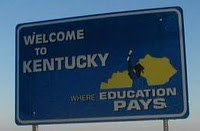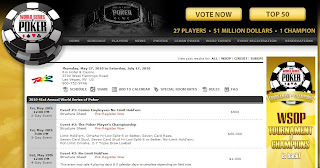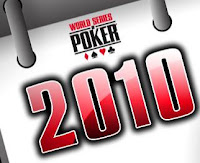More Multi-Accounting
According to his bio page on Two Plus Two, Nick’s nick comes from his former career on Wall Street. His poker career began in earnest in 2003, with an initial focus on limit hold’em. There’s talk in the bio of his careful bankroll management as he moved up limits (“he has always had 1,000 big bets in his poker designated bankroll for any limit hold’em game in which he has played”). The bio also mentions that 2+2 book he co-authored with Geoff “Zobags” Herzog titled Winning in Tough Hold’em Games: Short-Handed and High Stakes Concepts and Theory for Limit Hold’em, first published in 2007.
 I haven’t read that one, but consistently hear good things about it as one of the few high quality, high-stakes LHE books out there. The book was published by Two Plus Two where Grudzien has been a longtime poster and participant in the forums, and until recently was a moderator, too.
I haven’t read that one, but consistently hear good things about it as one of the few high quality, high-stakes LHE books out there. The book was published by Two Plus Two where Grudzien has been a longtime poster and participant in the forums, and until recently was a moderator, too. In 2006 (I believe), Grudzien helped launch the StoxPoker coaching site which included instructional videos, a forum, and soon became a popular landing place for players looking to improve their games. In 2008 a rival coaching site, CardRunners, acquired StoxPoker and the companies merged although continued to maintain separate sites.
Such a background thus made Grudzien’s recent admission to multi-accounting on PokerStars and Full Tilt Poker -- where doing so is not allowed by either site’s terms of service -- all the more notable.
I haven’t been able to follow every detail of how the scandal broke and eventually led to Grudzien’s confirmation that he had been playing on multiple accounts on a couple of different sites, but here is a thumbnail sketch of what has happened as far as I understand it. (Those already familiar with all of this might skip down for “a few thoughts” about it all.)
It was almost exactly a year ago that there was some discussion on Two Plus Two about possible collusion on Full Tilt Poker between two players -- “Kinetica” and “40putts” -- who always seemed to log on and off at the same times while playing (mostly) short-handed no-limit hold’em games using similar styles.
That furor eventually died down, but “40putts” attracted some attention again in January 2010 when he suddenly disappeared from Full Tilt on the same day another high-volume player named “knockstiff” stopped playing on PokerStars. A little over a week later two new accounts appeared -- “bulltf0rdtuff” on FTP and “gr3atvlewbr0” on Stars -- both of whom began playing the same games (and in the same styles) as had “40putts” and “knockstiff.”
Then three weeks ago an unknown poster -- apparently someone who had been previously banned from the site but who created a new account -- started a thread in the High Stakes No Limit forum at 2+2 with a post accusing Grudzien of multi-accounting using some of the aformentioned accounts. The post also reprised the earlier colluding accusation. The thread got deleted (and the poster banned again, I suppose), but the accusations soon reappeared in a post by the well known pro David “Viffer” Peat and thereby received renewed attention.
 As I mentioned before, Grudzien has long been a frequent contributor and a moderator at 2+2. Additionally, StoxPoker had its own sponsored forum on 2+2. So when a couple of days passed without a response from Grudzien, folks began to get increasingly agitated. Finally he did post a response on March 14 (a couple of days after Peat’s post) which addressed the situation but didn’t really deny that he’d multi-accounted.
As I mentioned before, Grudzien has long been a frequent contributor and a moderator at 2+2. Additionally, StoxPoker had its own sponsored forum on 2+2. So when a couple of days passed without a response from Grudzien, folks began to get increasingly agitated. Finally he did post a response on March 14 (a couple of days after Peat’s post) which addressed the situation but didn’t really deny that he’d multi-accounted. In fact, it sort-of-kind-of confirmed that he had.
Grudzien’s post included a fairly impressive catalogue of the ways someone might benefit from creating multiple accounts -- presented in the context of a denial that he’d benefited in these ways. Here’s what he said:
“There are online poker players who have used 2nd screenames for the purpose of deceiving others into giving them action, evading taxes, collusion, entering multiple times into the same tournament, ghosting, to obscure previous results and stats, to clear extra bonuses, to circumvent affiliate CPA or rakeback rules, to bypass the pokersites shortstack buy-in time limitation, to teamplay, to share action with others at the same table, to chip dump or otherwise engage in underhanded actions I do not know about. I have never done any of these things. Beyond that I cannot and will not comment on the screename issue, nor can I say why I cannot elaborate further other than to say that my reasons for that are serious and personal.”Fuel on the fire, that.
Three days later (March 17), Grudzien resurfaced to suggest he felt “a number of competitors and enemies” of CardRunners/StoxPoker were “seizing on this opportunity to discredit myself and our company,” and that an “official statement” would be forthcoming. He soon followed that with a post admitting to the multi-accounting, though denying ever colluding. He added that since he was admitting he’d violated the TOS of FTP of Stars, he would not be playing on either site until they gave him permission to do so.
 One day later, Grudzien said he was resigning from StoxPoker. A week after that, StoxPoker announced it would be merging its site with CardRunners altogether (starting May 1, 2010).
One day later, Grudzien said he was resigning from StoxPoker. A week after that, StoxPoker announced it would be merging its site with CardRunners altogether (starting May 1, 2010). A few thoughts come to mind here.
There’s the obvious disappointment at hearing about yet another high profile player -- indeed, one to whom many regard as a coach/mentor -- having failed to abide by the rules most of us don’t think twice about following. I was also intrigued by that list Grudzien provides of the many ways one might benefit from multi-accounting, a list which includes some obvious items but also a few which I hadn’t even considered previously.
Also interesting were the complaints by some (including Peat) about Grudzien having apparently short-stacked while playing under the other accounts -- not a violation of sites’ TOS, of course, but a strategic approach that offends some players greatly. Besides exciting the general detestation toward short-stacking, some believed Grudzien’s doing so was somehow hypocritical given the fact that it ran counter to his coaching. Kind of missing the big picture there (it seems), but a curious reaction nonetheless.
The other part of this story I wanted to mention concerned Two Plus Two’s involvement. Again, we’re seeing how the sites can’t really enforce rules against multi-accounting on their own, and that 2+2 plays an especially significant role when it comes to ensuring some semblance of fairness in online poker. The deletion of the original thread about Grudzien earlier this month (the one started by the banned poster) understandably raised some eyebrows -- was 2+2 attempting to suppress the story exposing a mod, author, and sponsor? -- though I think ultimately the site has handled it all sufficiently thus far.
Mason Malmuth appeared on the 2+2 Pokercast last week (the 3/23 episode, No. 114) to address how the site had decided to suspend (temporarily) its relationship with Grudzien and CardRunners/StoxPoker. Having been somewhat critical of some of Malmuth’s positions before, I was prepared to be a little cynical when he came on, but in fact found his assessment of the situation fairly reasonable and balanced. And even (uncharacteristically) modest, although he did slip in there that the site is currently receiving approximately 30,000 posts a day. That’s a ton of content to try to moderate!
The online sites have a similar issue with which to contend -- i.e., a ton to moderate. I suppose while there is a lot about this story that gets my attention, that is really the only part of it that has direct relevance to a small-timer like me.
When an instructor/expert is willing to violate sites’ rules about multi-accounting, it’s clear they aren’t being enforced well enough (or cannot be enforced well enough) to discourage others from doing so, too. And I guess that’s a bit unsettling, given that long list of ways Grudzien provides explaining how others’ multi-accounting could negatively affect me.
Labels: *the rumble, CardRunners, cheating, Nick "Stoxtrader" Grudzien, StoxPoker, Two Plus Two


 on the button, and the chip leader completed from the small blind. Snickers then raised to 1,000, Butterfingers called, and the chip leader folded.
on the button, and the chip leader completed from the small blind. Snickers then raised to 1,000, Butterfingers called, and the chip leader folded.

 . Snickers checked, Butterfingers quickly bet (500), and Snickers made the call. The rapidity of Butterfingers’ bet -- coupled with the fact that he tended to play very straightforwardly (betting with something, calling/folding without) -- made me think the tourney could be ending on this hand.
. Snickers checked, Butterfingers quickly bet (500), and Snickers made the call. The rapidity of Butterfingers’ bet -- coupled with the fact that he tended to play very straightforwardly (betting with something, calling/folding without) -- made me think the tourney could be ending on this hand. , and again Snickers check-called Butterfingers’ bet (1,000). The river brought the
, and again Snickers check-called Butterfingers’ bet (1,000). The river brought the  , pairing the board. Snickers, who now had just 1,165 left, thought a moment before checking. Butterfingers also paused before acting. It occurred to me he could perhaps have K-Q and was worried he’d been counterfeited here when the second eight arrived. Finally, he checked.
, pairing the board. Snickers, who now had just 1,165 left, thought a moment before checking. Butterfingers also paused before acting. It occurred to me he could perhaps have K-Q and was worried he’d been counterfeited here when the second eight arrived. Finally, he checked. 
 . Butterfingers surprised me even more with his hand --
. Butterfingers surprised me even more with his hand -- 
 .
.
















































